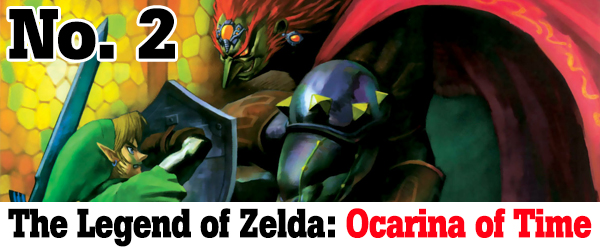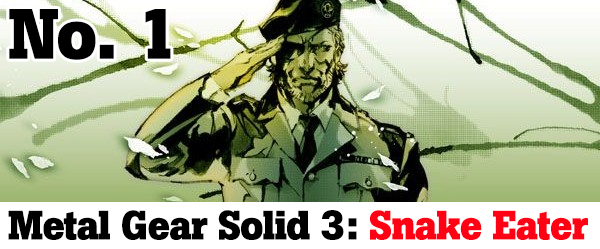Percentage of the vote: 16
Release date: 1998
Place in the series’ timeline: Ocarina of Time takes place “many years” (perhaps centuries) after Link vanquished the nefarious wind mage Vaati in The Legend of Zelda: Four Swords, a relatively early event in the franchise’s chronology.
Staff Writer Omri Petitte: Nintendo’s Shigeru Miyamoto once likened Nintendo 64 classic The Legend of Zelda: Ocarina of Time to Star Wars: A New Hope. The comparison didn’t stem from a predilection toward wide-eyed, sandy-haired heroes favoring interjections over intelligence – rather, both works represent the first of its kind: a capstone of a long-lasting legacy in the making.
Ocarina of Time captured the adoration of gamers by presenting a fully explorable Hyrule in 3D for the first time. It solidified Nintendo’s reputation for first-party masterworks helmed by some of the most influential Japanese game designers known today. The epic good-versus-evil plot involving stalwart hero Link taking up his Master Sword against recurring villian Ganondorf produced unforgettable moments aplenty. Coupled with the N64’s then-advanced graphics and an instantly recognizable soundtrack, The Legend of Zelda: Ocarina of Time endures (timelessly?) as one of the greatest prequels ever made.
Neat prequel fact: The powerful Sages who assist Link in defeating Ganondorf bear the same names as towns from Zelda II: The Adventure of Link, a 1987 Nintendo Entertainment System title occurring later in the timeline. Rauru, Ruto, Saria, Nabooru, and Darunia (the sixth Sage, Impa, isn’t named after a town) are all areas visited by Link during the course of the game.
Percentage of the vote: 30
Release date: 2004
Place in the series’ timeline: Metal Gear Solid 3 takes place in 1964, earlier than any other title in the series.
Staff Writer Mike Minotti: This snake can stand tall. GamesBeat’s readers and staff have declared Metal Gear Solid 3: Snake Eater the best gaming prequel of all time with a whopping 30 percent of the vote.
After Metal Gear Solid 2: Sons of Liberty disenchanted many of the series’ fans with its convoluted plot and whiny protagonist, Hideo Kojima decided to set his next stealth-action game during the height of the Cold War. The setting made a lot of sense (Metal Gear had always involved nuclear weapons as a major plot element), but moving the action back to 1964 gave gamers a chance to play as and learn about Naked Snake, who would go on to become Big Boss, the genetic father and later enemy of Solid Snake, the protagonist of most of the other titles in the franchise.
Still, most remember Snake Eater for its personal and emotional plot, which culminates in an unforgettable showdown between Snake and The Boss, his mentor and mother figure. Add Metal Gear Solid’s signature stealth-based action, a rousing score from composer Harry Gregson Williams, and insights into the events that would shape the world of the series and you’ve got the greatest gaming prequel ever.
Neat prequel fact: While the nuclear device Snake fights to stop in Snake Eater, the Shagohod, is not a Metal Gear, we get to meet the inventor of the bipedal tanks, Dr. Aleksandr Leonovitch Granin, during the game. He eagerly shows his designs to Snake before telling him that he plans to send the documents to a friend of his in America. This is Huey Emmerich, the father of Hal Emmerich (better known as Otacon, who worked on Metal Gear Solid’s Metal Gear Rex).
VentureBeat's mission is to be a digital town square for technical decision-makers to gain knowledge about transformative enterprise technology and transact. Learn More



